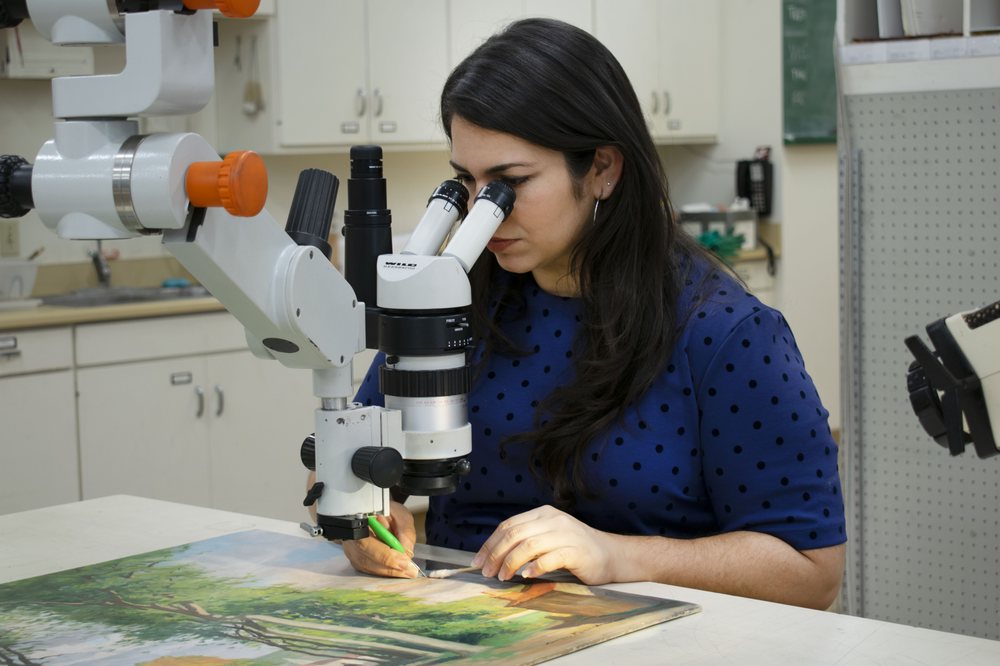|
Now an Assistant Conservator of Paintings at BACC, Bianca Garcia first landed at the Center as a Mellon Fellow in Paintings Conservation. Her areas of interest include pre-19th century paintings, Spanish Colonial art, and polychrome sculptures. When she is not conserving art at BACC, she serves as the Program Manager for the Andrew W. Mellon Opportunity for Diversity in Conservation, an initiative that supports opportunities for students who are from backgrounds that are historically underrepresented in the conservation field. Learn more about Garcia as she answers five questions about being an art conservator: When did you know that you wanted to be an art conservator?
I knew I wanted to be an art conservator by 11th grade, around the time I had to start thinking of a college major. I liked art but didn’t want to be an artist. I also liked history and was good at math and science. This was in 2002, so I was able to search online for careers in art, and art conservation was one of the things that came up. It sounded super cool and interesting and I was put in contact with a paintings conservator at the Museo de Arte de Ponce in Puerto Rico. They allowed me to come in for two weeks in the summer to shadow them and work on some projects. My very first treatment was cleaning a giant frame that filled up an entire room. I also got to consolidate a polychrome sculpture and inpaint on a painting. I was immediately hooked and loved every single second of it. That’s when I knew. Thank you, Google. To date, what is the favorite conservation project that you have worked on? SO hard to choose! Every treatment is like my own child. I think it would have to be my first tear mend. It was a seascape that I treated while in graduate school. It had a pretty gnarly compound tear right in the middle of the painting. The owner was able to save pieces of canvas with paint on it that had broken off, but others were missing. I got to meticulously mend the tear, reattach the pieces that broke off, and create new inserts for the missing areas. It was a very time consuming project, but it was so satisfying to see it all come together and in the end have it look like nothing had ever happened to the painting. Another memorable project was working on a Jazz Fest poster as a pre-program intern in New Orleans. I was there two years post-Hurricane Katrina and a client brought in this poster that was extremely damaged from the flooding. The treatment cost much more than the value of the poster, but we later learned that it was the only thing that he was able to save from his destroyed home. What is the most challenging part of your job? Having to fit a treatment in a specific timeline and budget can be personally challenging. We have to give clients an estimate and stay within that, whereas conservators working in museum settings usually don't have to deal with that. In an ideal world I would have endless time on a project! What is the most rewarding part of your job? The after-treatment big reveal with a client. The joy in their eyes is so gratifying. Being able to bring something back to them that they thought lost, especially if the artwork has sentimental value, is priceless and magical. What do you wish more people knew about conservation work and/or conservators? That this is not a hobby. I wasn’t just good at art and decided I could touch up and fix paintings. I’ve spent many years training to become a paintings conservator and had to go to graduate school for this career, as well. Comments are closed.
|
Categories
All
Archives
June 2024
|

